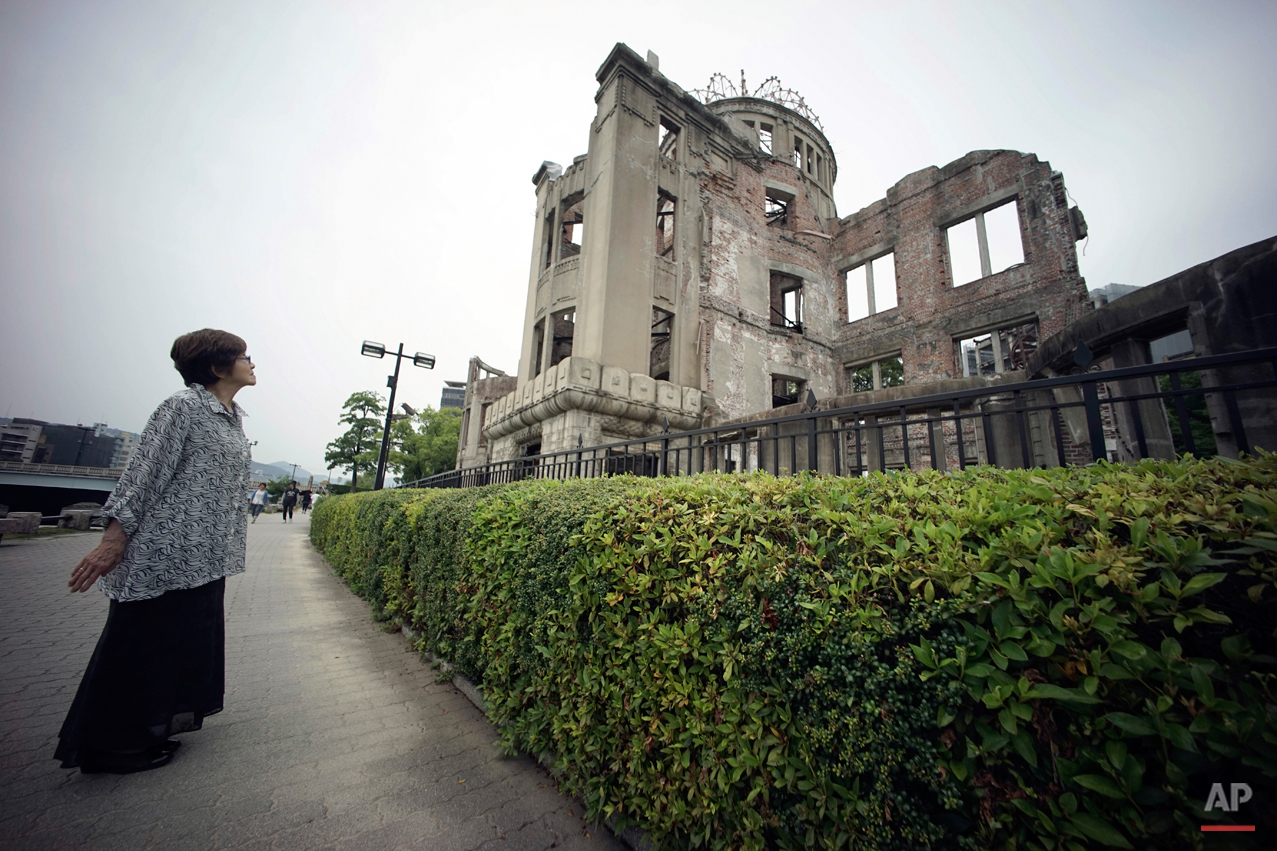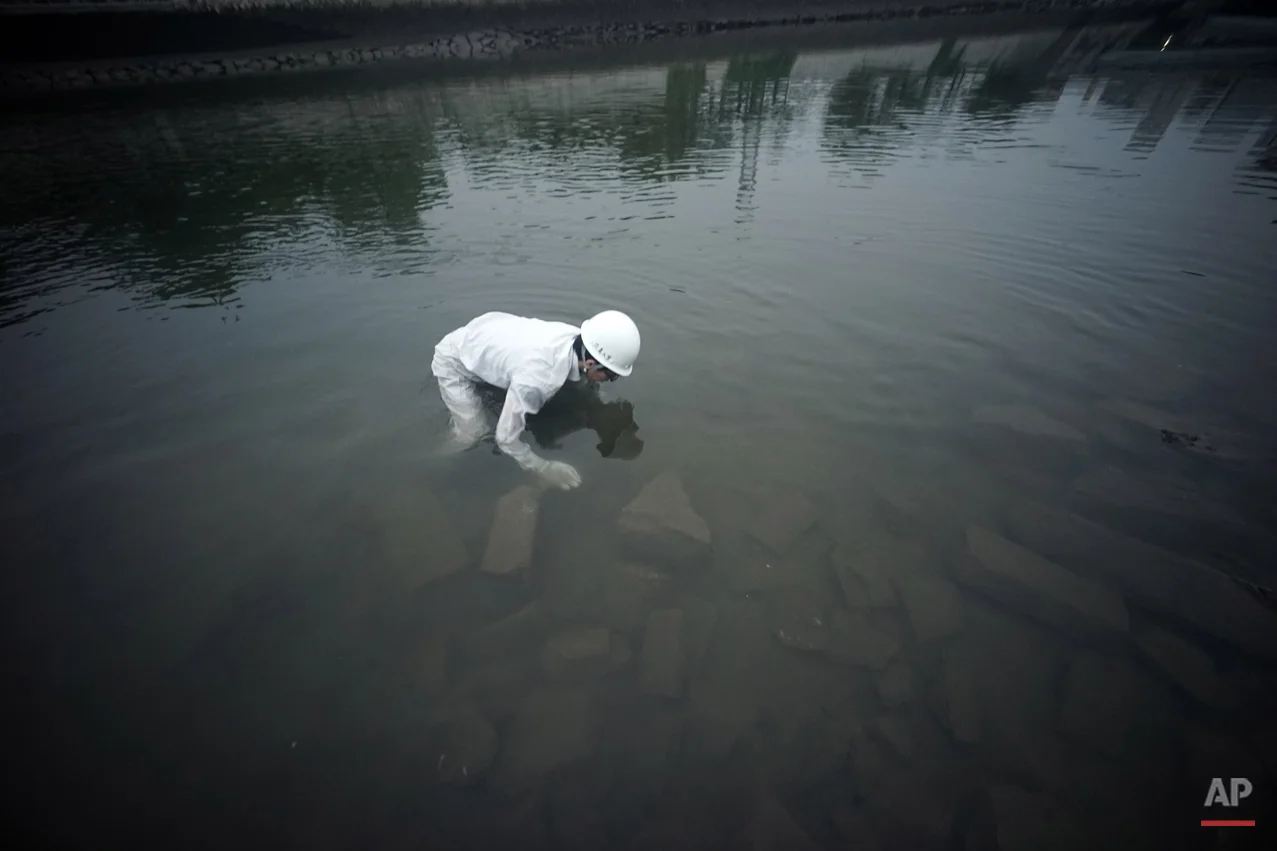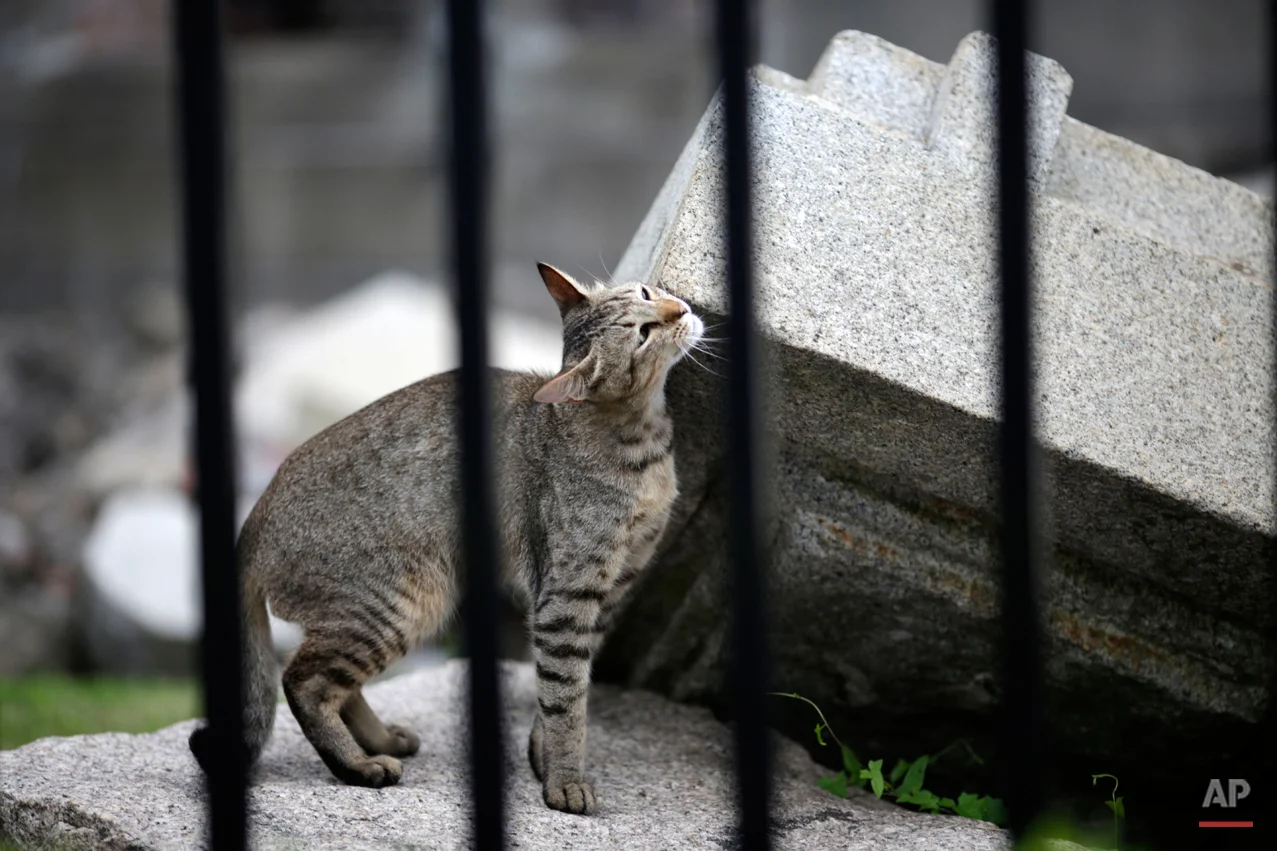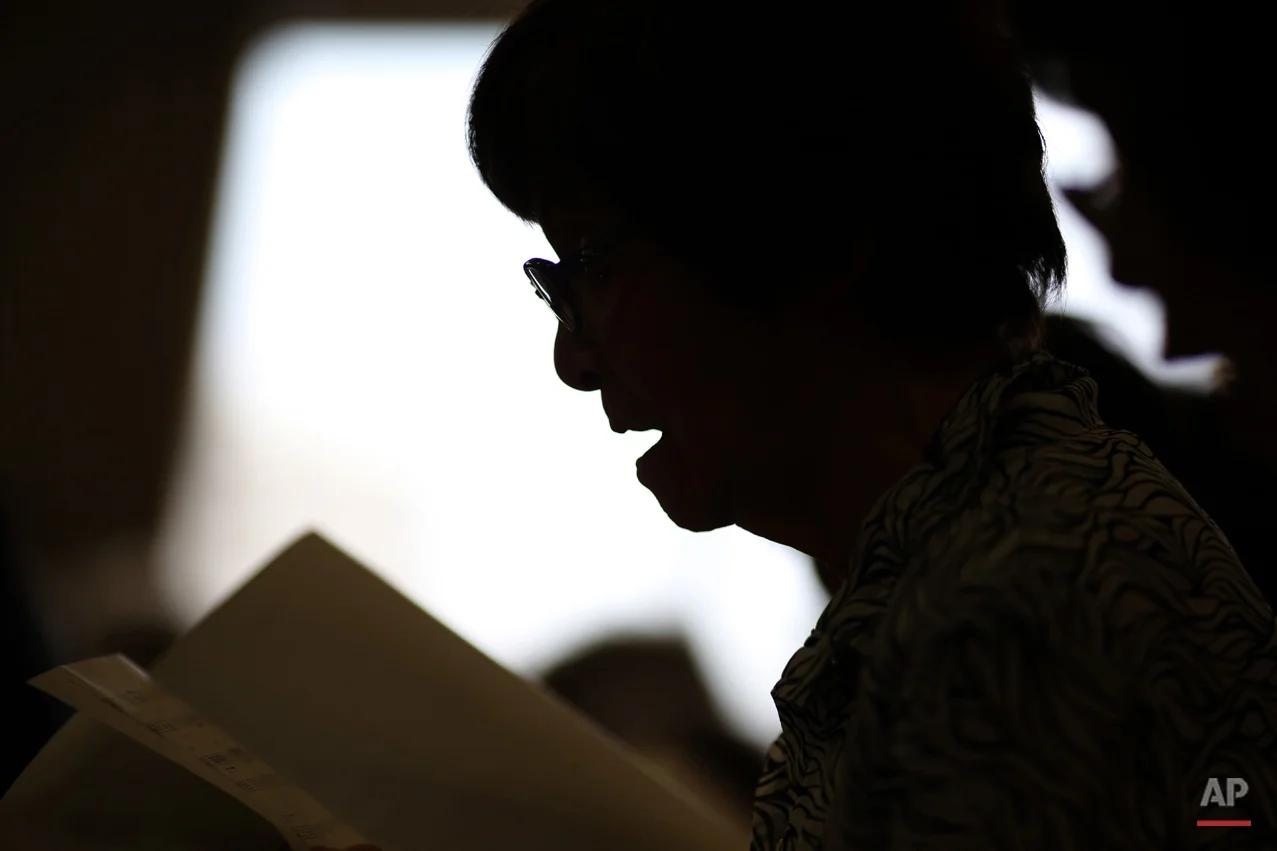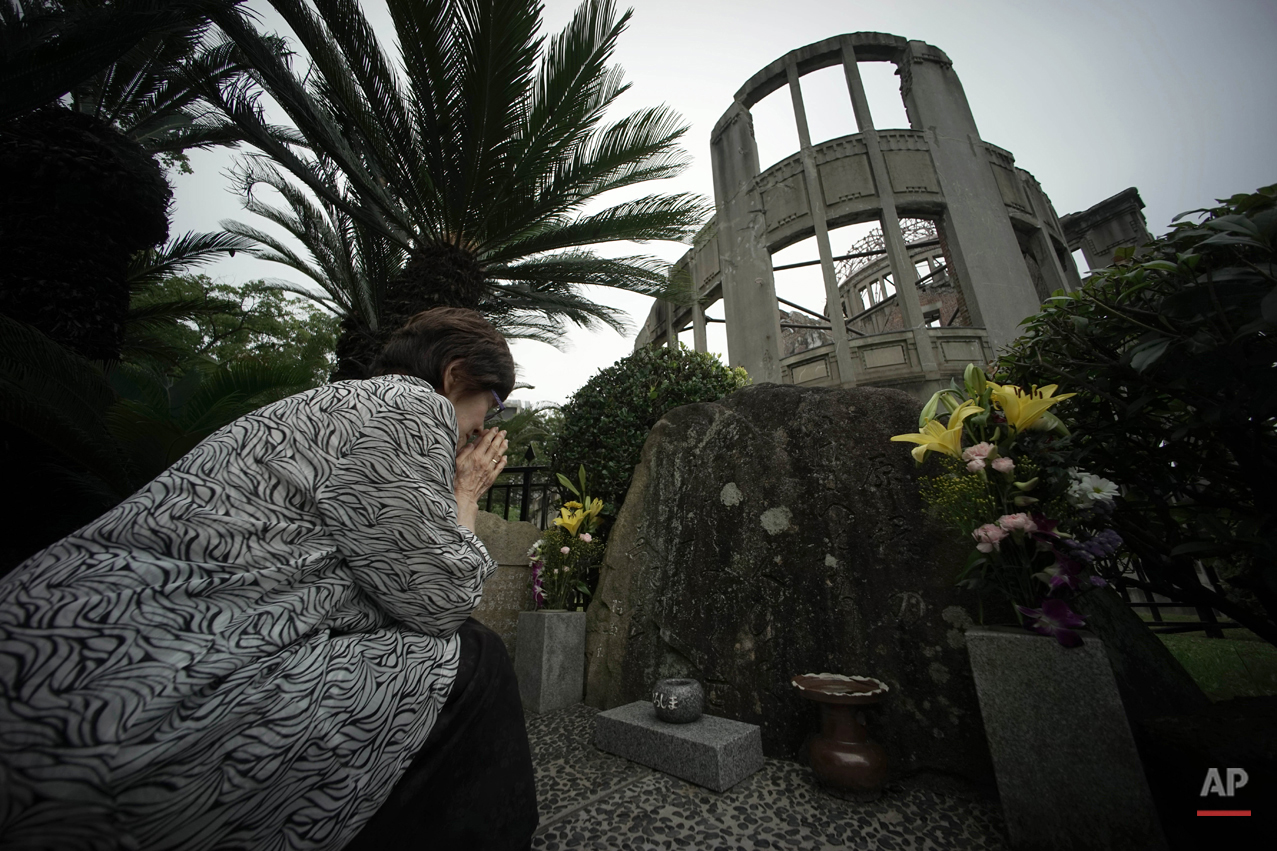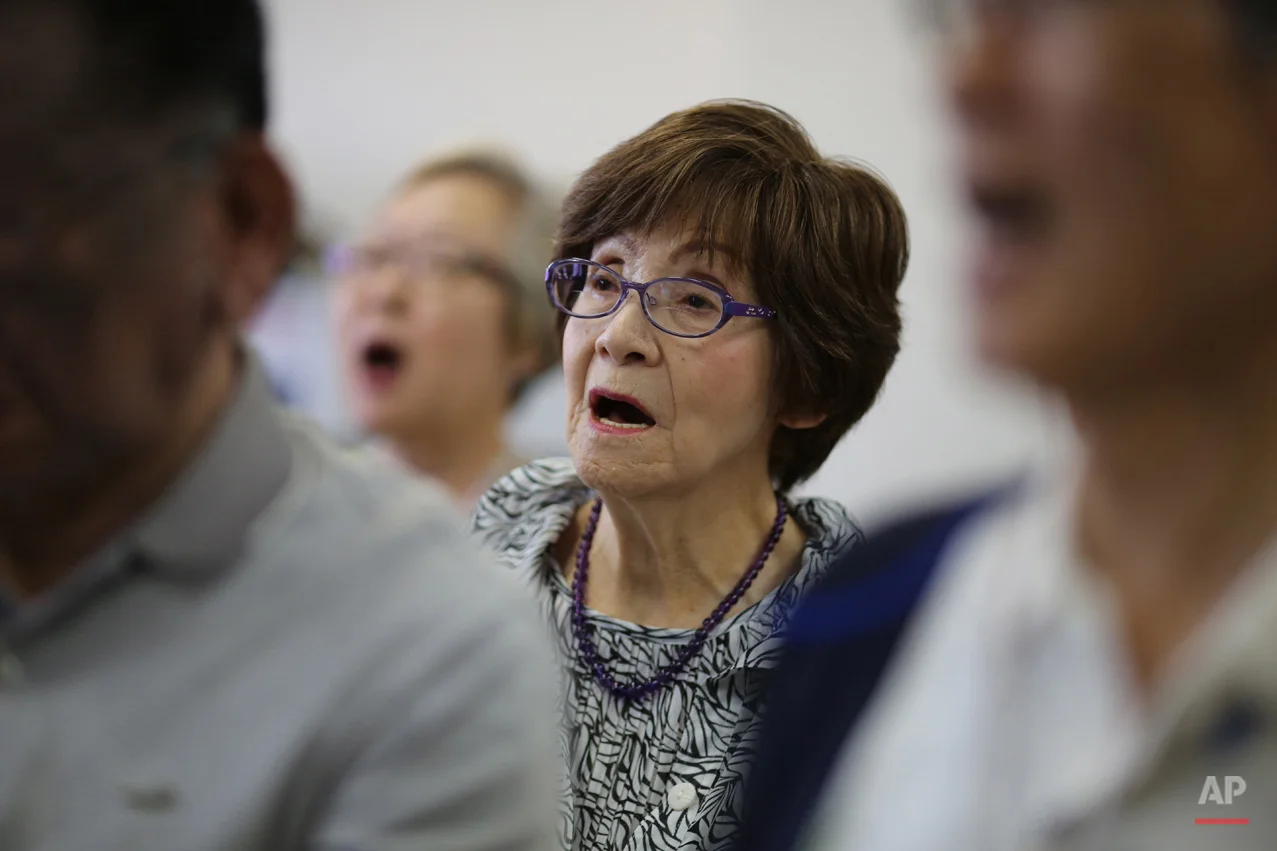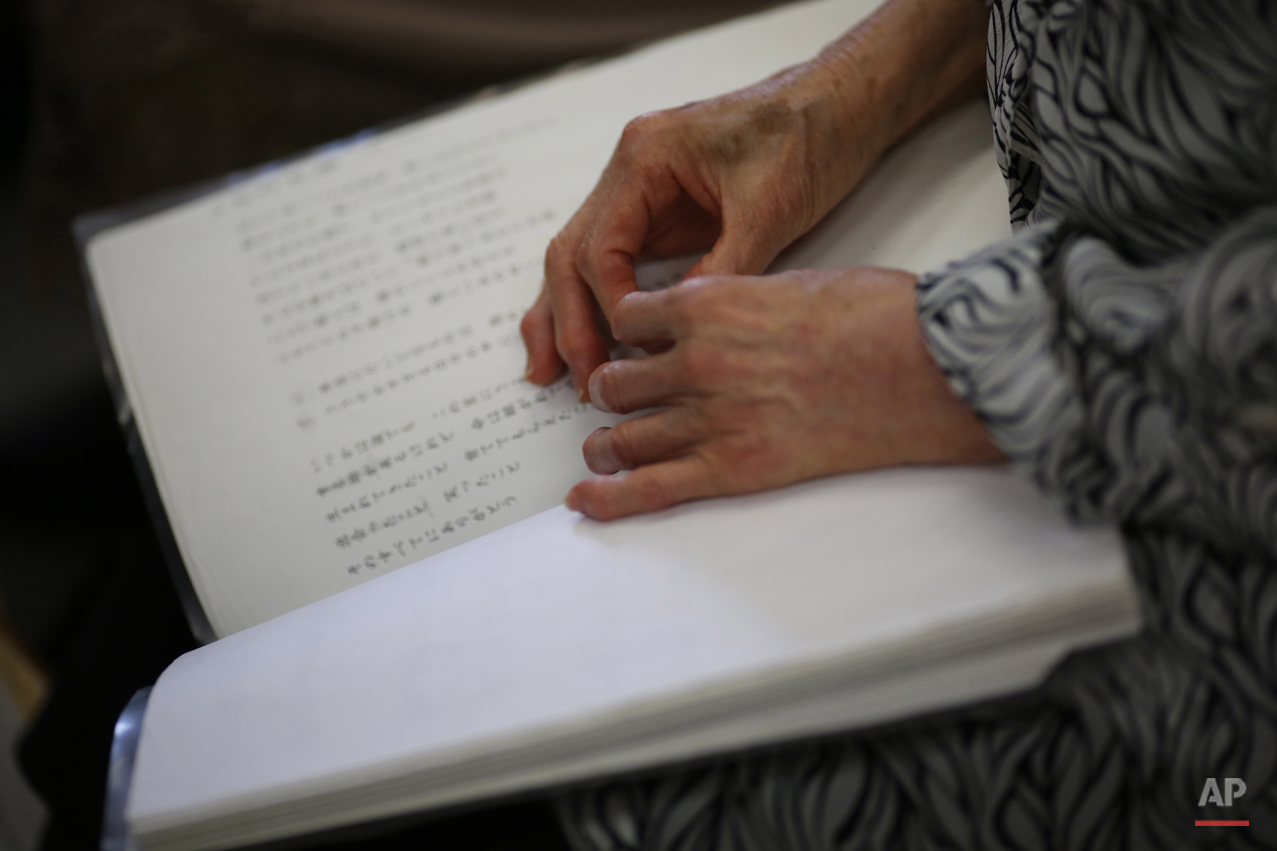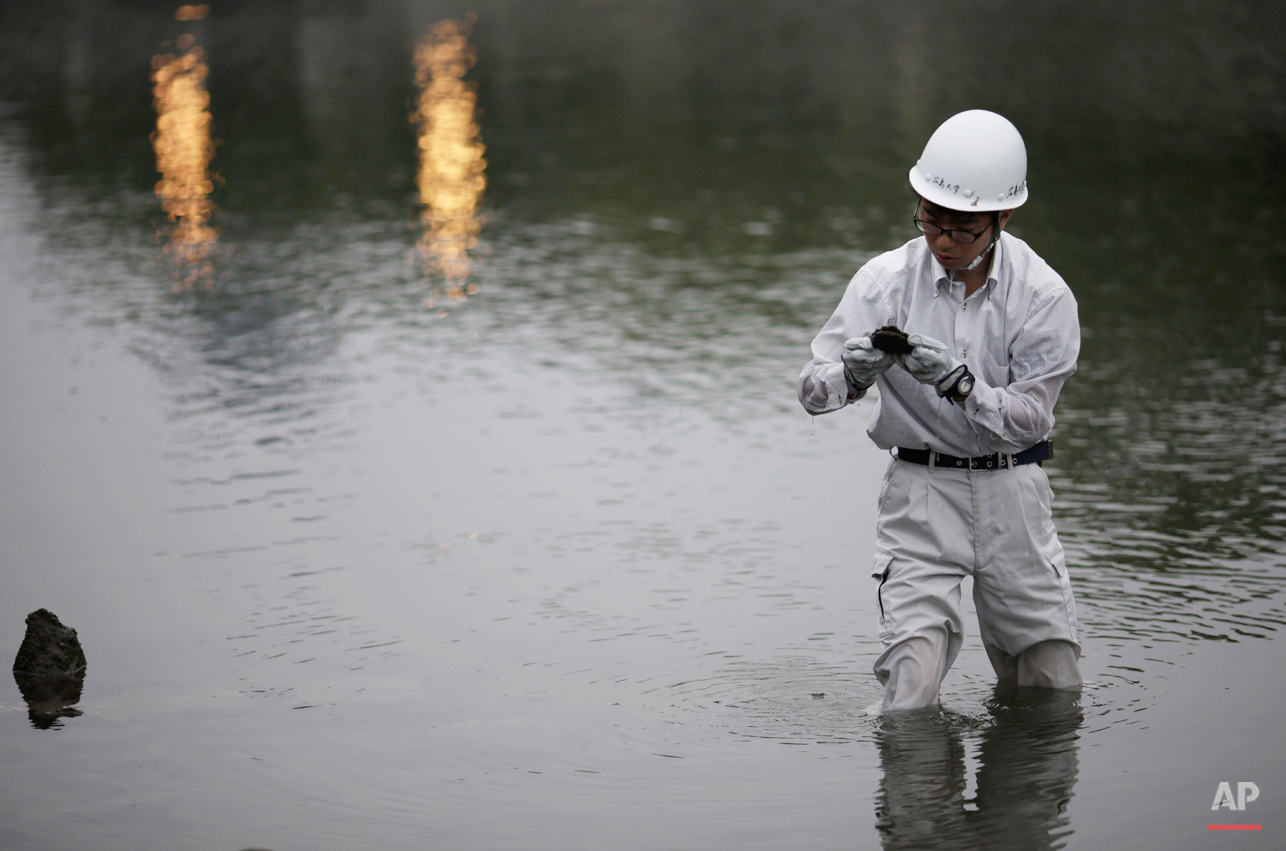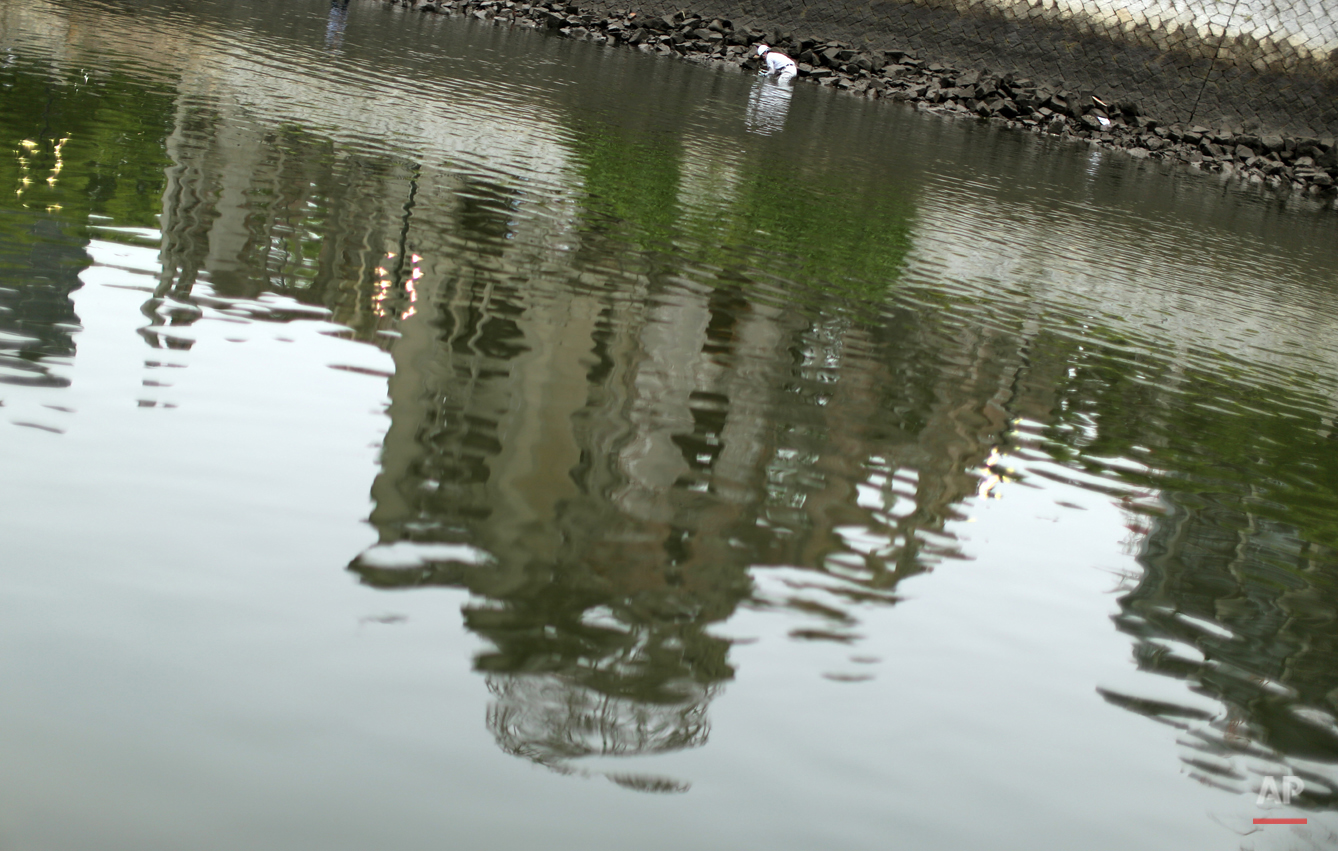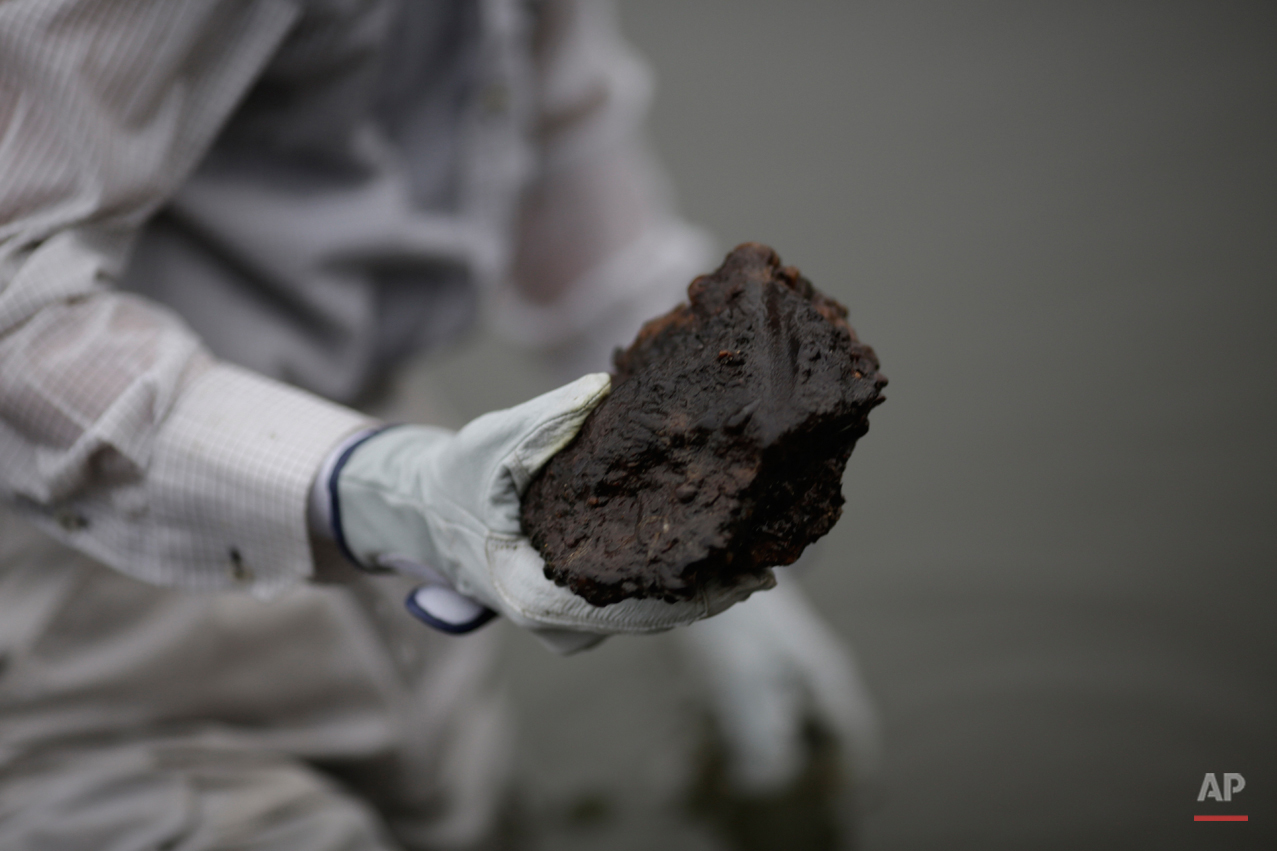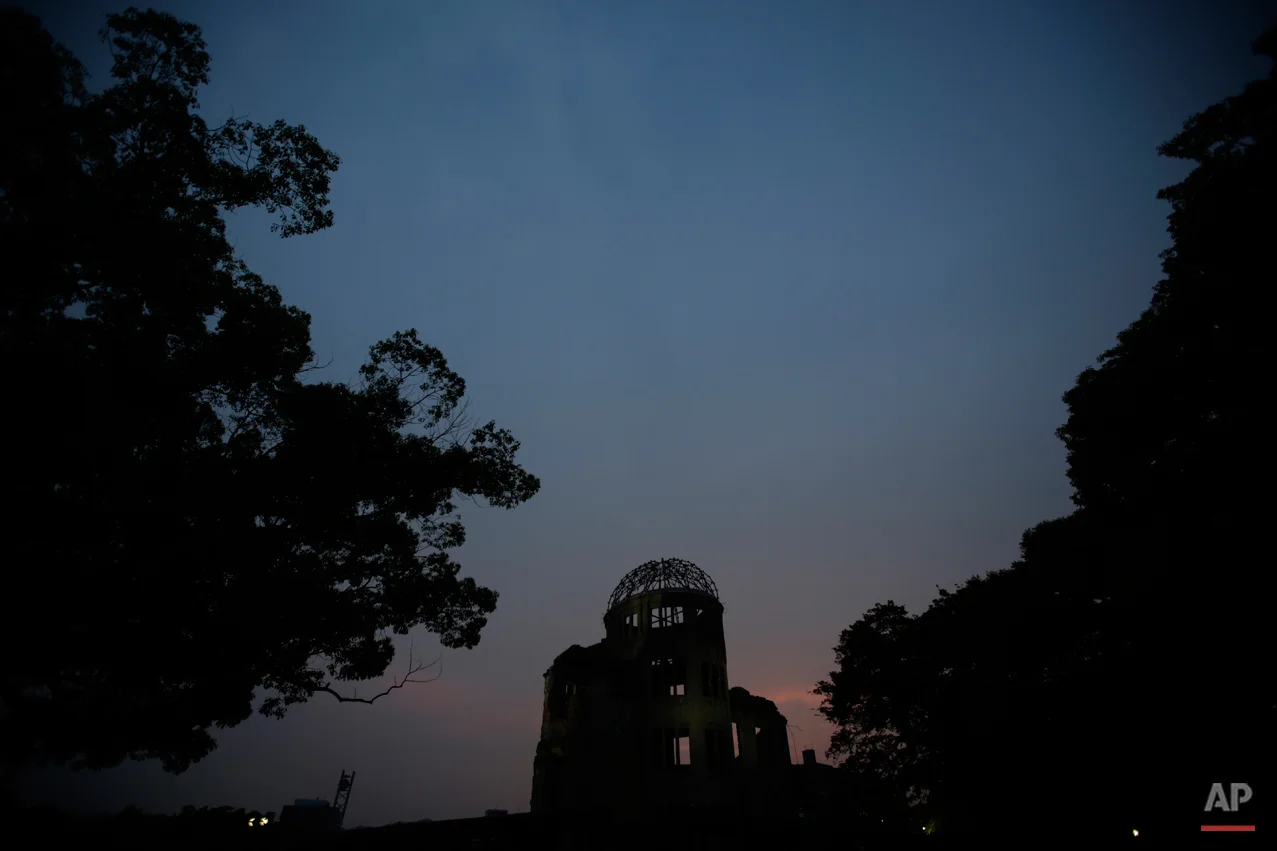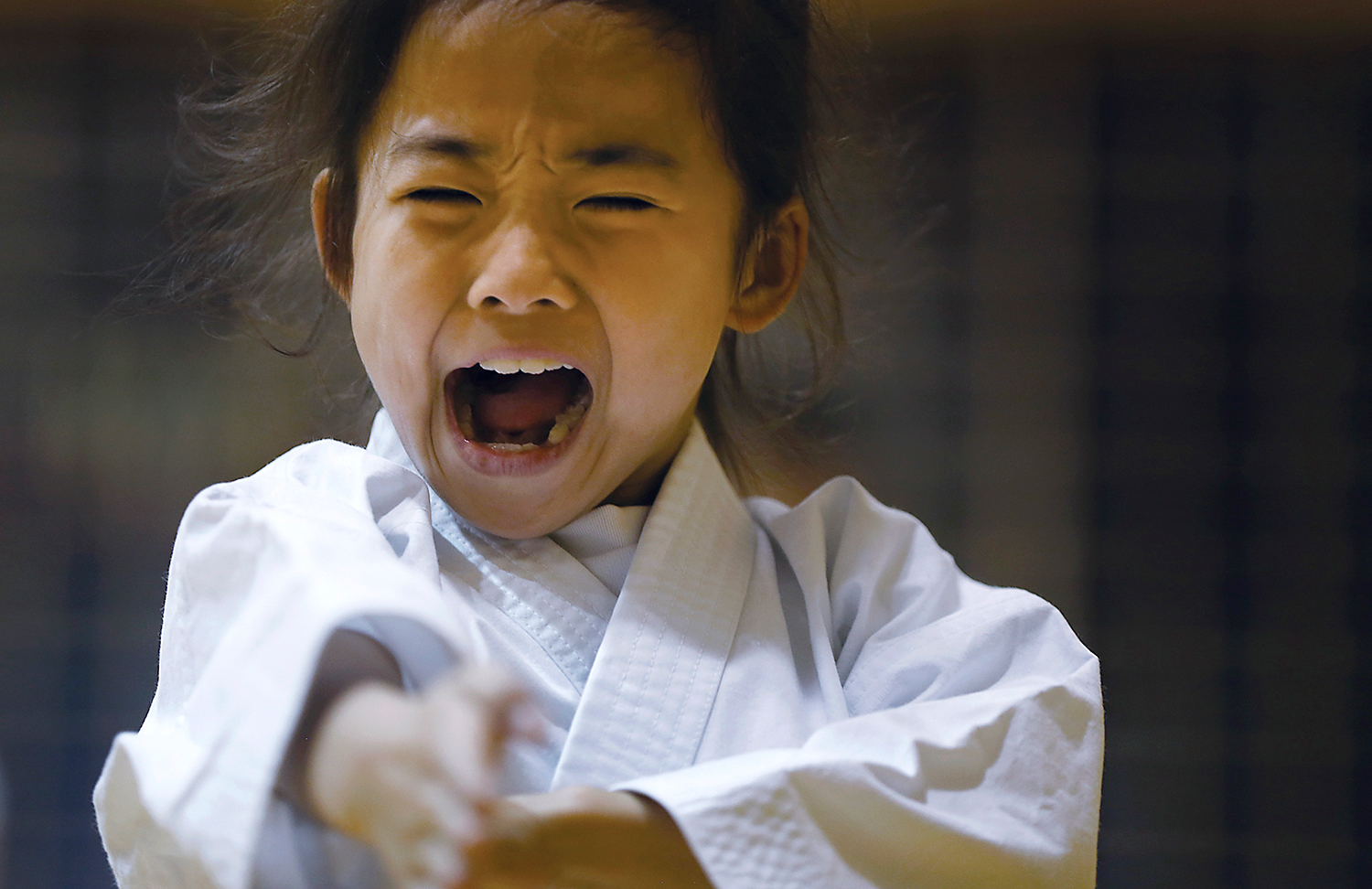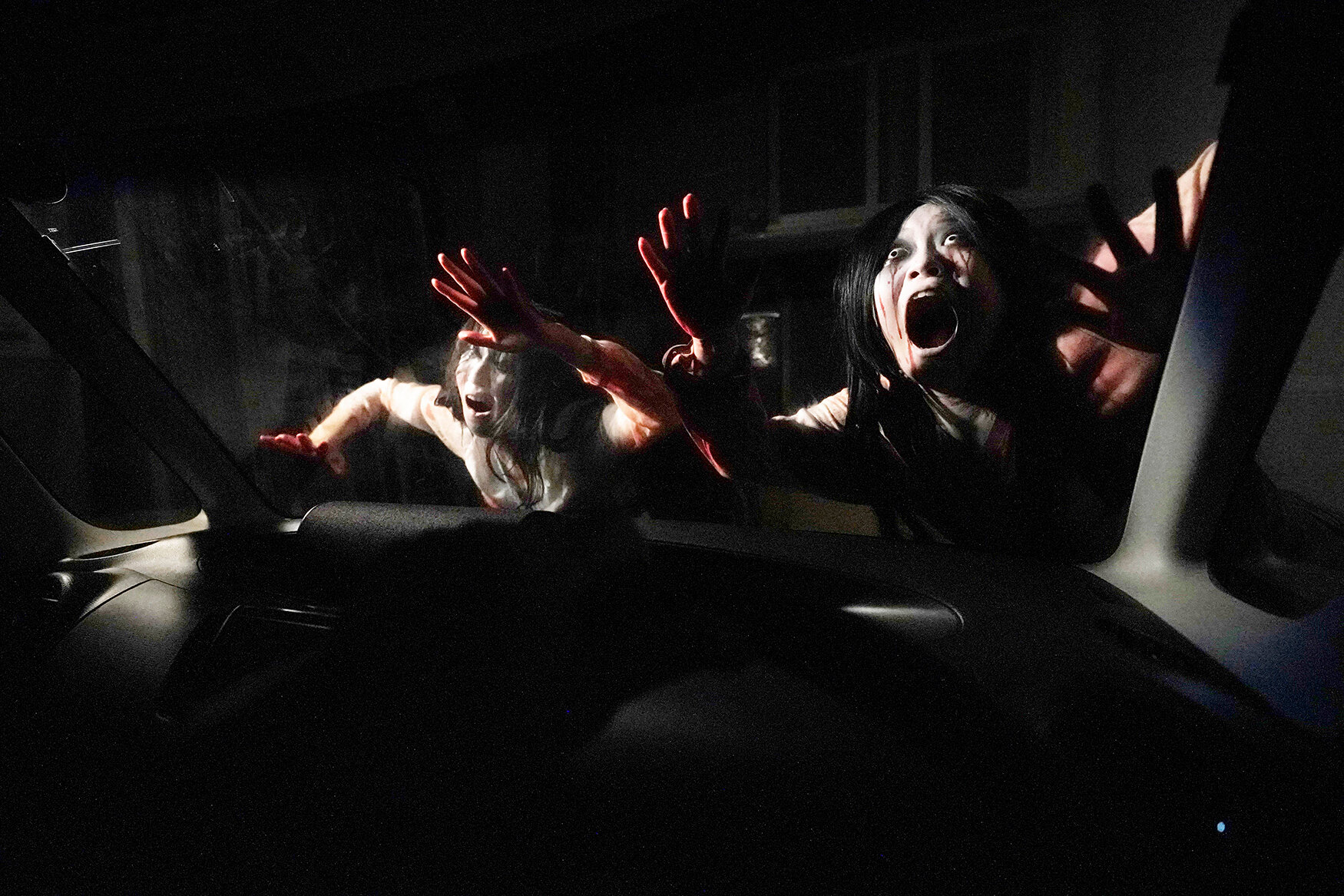Remembering, and saving, A-Bomb's legacy at Hiroshima dome

The crumbling brick and concrete walls of the Atomic Bomb Dome, as it is known today, rise above the Motoyasu River. The bomb so devastated Hiroshima that there are few other reminders of the city that was here seven decades ago.
"I didn't want to see this place for a long time," said Kimie Mihara, a fragile but straight-backed 89-year-old. She walked slowly around the fenced-off ruin, now roofless save for the dome's skeleton.
On the morning of Aug. 6, 1945, this building was her office. She was running late to work. That's the only reason she's still alive.
"When this was registered as a UNESCO World Heritage site, I thought of coming here. But I still didn't want to see this place," she said.
Rebun Kayo, on the other hand, has made it his life's work to come back, again and again. At the crack of dawn recently, some curious joggers stopped to watch the 38-year-old Hiroshima University graduate student wading in the shallow waters in front of the dome at low tide, under a still-dark sky.
He hunched over to feel the riverbed for blasted remnants of the dome still submerged. In this city where physical history has been almost fully erased, he is determined to save those that are left, even those small enough to fit in the palm of his hand.
EDITOR'S NOTE — On two days in August 1945, U.S. planes dropped atomic bombs, one on Hiroshima, one on Nagasaki, the first and only time nuclear weapons have been used in war. Japan surrendered on Aug. 15, ending World War II. This is the story of a still-scarred building that stands in Hiroshima, 70 years after the fateful morning of Aug. 6.
The dome building is literally a shell of what it once was, empty save for some stray cats lounging on a broken windowsill.
Debris from the wall and roof, some pieces more than a meter (3 feet) long, remain scattered on the floor, visible through holes in the walls and empty window frames.
Built in 1915, it was a rare example of Western architecture in Hiroshima at the time. Czech architect Jan Letzel designed it to be a city landmark and an exhibition hall for industrial and cultural promotion.
The three-story building was just 160 meters (525 feet) from the epicenter of the blast, yet was the only thing left standing in the area. It was one of the few structures built of brick, stone and steel in what was essentially a wooden city. Most buildings were flattened and burned by the bomb, which turned the seaport into a wasteland and killed an estimated 140,000 people, including those who died from their injuries or radiation exposure though the end of 1945.
About 30 workers were believed to be in the dome building, which had been converted to accommodate mostly government offices as the war intensified. All likely perished, though some remains have never been recovered.
Today, though the building is too hazardous to be open to the public, it is still a focal point of Peace Memorial Park, and a must-see for many of the more than 11 million tourists Hiroshima receives annually, about 650,000 of whom come from outside Japan.
Mihara was 19, and had been working in the dome building for about two months. An interior ministry worker, she excelled at using the abacus and was helping in the accounting department. She recalls how busy her days were. Her office was on the ground floor, facing the river, but she hardly had time to enjoy the view right outside her window.
She was due in the office at 8 a.m. The U.S. B-29 bomber Enola Gay dropped the bomb at 8:15. She said she had been unusually tired that morning, and did not feel like going to work.
"I survived as I was late," she said. "So, yes, I know and feel lucky that I wasn't here at that time. But, thinking about those who were killed just because they were good and punctual, I am just so sorry and feel so bad for them."
She remembers little about her co-workers, who were mostly men. The trauma of the bombing eclipses any memories she might have had of the weeks before it.
Although she escaped death, her face, arms and legs were burned; some scars are still visible. Her house burned down, she was bedridden for three months and she lost her father, who was believed to be at his office close to the epicenter.
Losing so much, the remaining family members left Hiroshima to rebuild their lives. Mihara met her husband in Kyushu, the island south of Hiroshima, and they had three children.
While many atomic bomb survivors, particularly women, found it difficult to marry because of fears their children would have birth defects, Mihara says her husband was so smitten with her that his mother didn't object. He died relatively young, however, and Mihara returned to Hiroshima, where she worked in a trading company to support her family until retirement.
In its postwar rebuilding, Hiroshima decided to conserve the dome as it was in 1961, leaving it as an icon of devastation in a city where such scars were quickly becoming invisible. The building was registered as a UNESCO World Heritage site in 1996 to call for a non-nuclear world and world peace.
For most of the past 70 years, Mihara said little about her time at the dome. But as others of her generation passed away, she began to wonder whether it was her duty to speak — even whether that was the reason fate spared her. Now she shares her experiences more.
"I could have died in the bombing, but I am so blessed having survived to live such a happy life," she said on a cloudy July afternoon.
She stopped at an inconspicuous memorial, mounted on the corner of the fence surrounding the dome, and kneeled to pray.
Kayo first visited Hiroshima on a school trip when he was 14. He listened to a survivor who told her story on the riverbank; he was struck by the scars on her neck and hands.
About a decade ago, he learned that debris from the dome could still be found in the river. He began searching for it, in part to keep the memory of the event from fading away.
"What I am afraid of is that it started to feel like something further from reality," he said. "But here in front of the dome, everything is conserved as it was, and we can still find these relics from that time. In this way, I am trying to bring back the past to the present."
He has retrieved shattered bricks and stones of various sizes. On many, the L-shaped motif that decorated the building is still visible, though much faded.
A few pieces are as big as a meter (3 feet) long, and had to be pulled out with a machine. Most are much smaller. Shells have attached to them after decades in the river.
Kayo has been allowed inside the normally off-limits building to compare its material and structure with the debris he has found. So far he's found about 1,000 bits of rubble that match.
There is no known research on how the debris ended up in the river, Kayo said. He suspects some of it was thrown into the river when people were trying to rebuild the city after the bombing, but he doesn't rule out the possibility that some was blown into the river by the blast.
He has sent pieces to more than 50 universities and institutions across the world as tangible evidence of the destruction. Though some declined the gift, about 20 accepted, including Stanford University and Cambridge. At Hiroshima University on Thursday, the 70th anniversary of the bombing, a representative of the Czech Republic, the architect's homeland, will accept the largest fragment Kayo has recovered so far.
Kayo's university also displays some of the debris at a small museum on campus. He has set up a nongovernmental organization and now has a few younger students helping him with the work. He's also studying anatomy as a Ph.D. candidate, to be prepared in case he finds the remains of A-bomb victims in the riverbed.
Each time Kayo looks for more pieces of the building, he bows to the river before he steps in.
"To me, the dome is a graveyard for those killed in Hiroshima, for those killed inside the dome, died nearby, died drowning in the river, those died at the field hospitals," he said. "The place is a graveyard for all of them."
Text from the AP news story, Remembering, and saving, A-bomb's legacy at Hiroshima dome, by Kaori Hitomi.
Spotlight is the blog of AP Images, the world’s largest collection of historical and contemporary photos.
Written content on this site is not created by the editorial department of AP, unless otherwise noted.
Visual artist and Journalist

